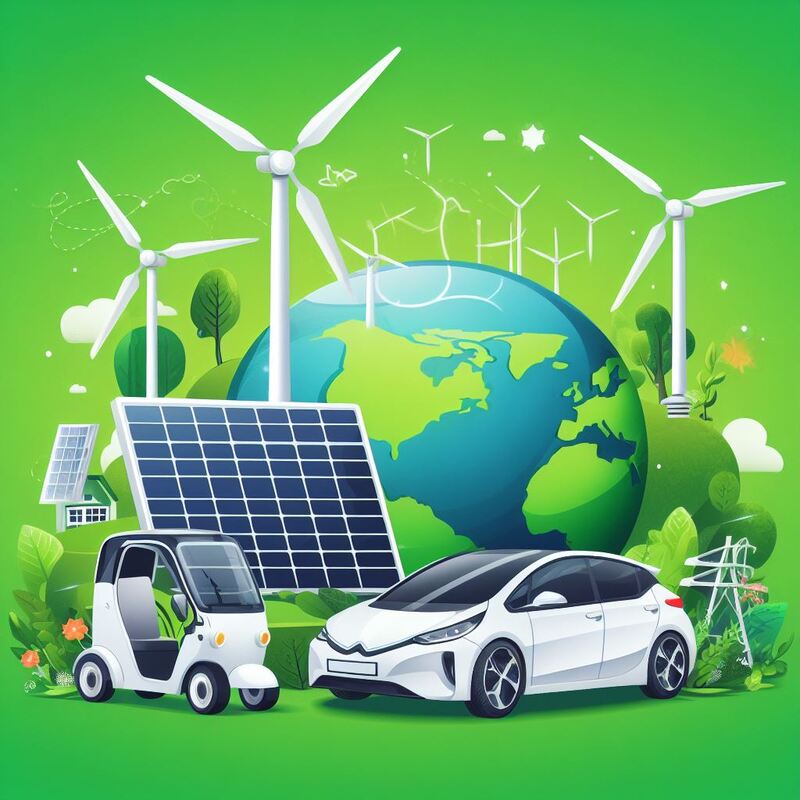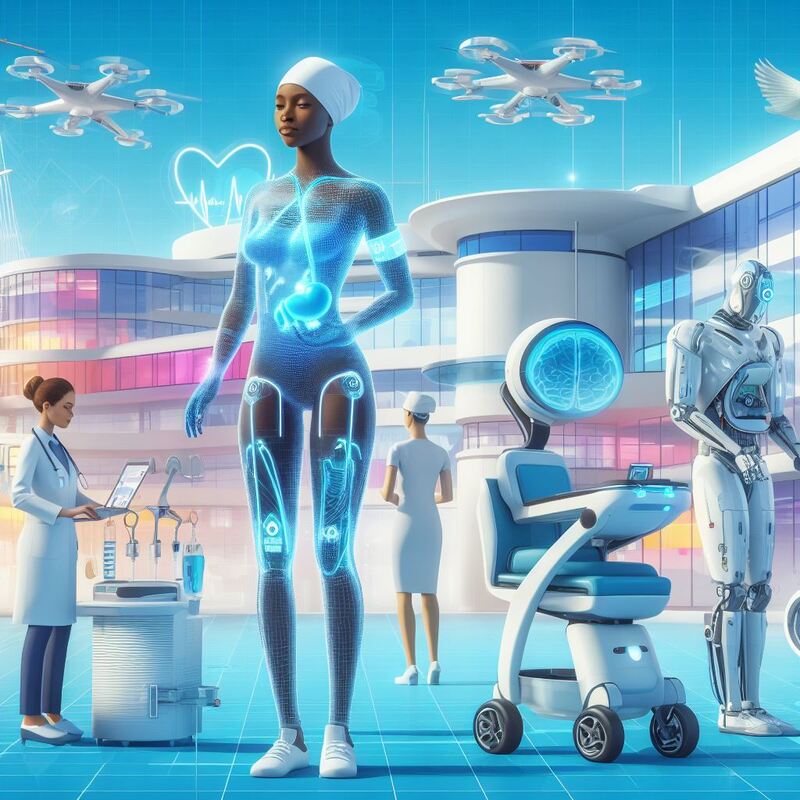You’re living in a world that’s heating up faster than a popcorn kernel in a microwave, thanks to climate change. But wait to start building your ark! Tech’s stepping up to the plate like a superhero in a cape, ready to knock climate change out of the park. From harnessing renewable energy that’s cleaner than your grandma’s kitchen to AI conservation efforts acting like a digital David Attenborough, waste management innovations that would make Oscar the Grouch proud, and bioengineering solutions that even Frankenstein would be impressed by, technology’s strutting its stuff at the forefront of this battle. Even our friendly eye-in-the-sky satellite tech is helping keep tabs on our ever-changing environment. Let’s delve into how these tech innovations are not just playing the game but changing it in our war against climate change. You’re part of this sci-fi reality, too, so grab your popcorn (not the climate-popped one), and let’s understand it better.
Harnessing Renewable Energy Technologies
Leveraging renewable energy technologies is a serious step you can take to battle climate change – it’s like becoming a superhero. Still, instead of spandex, you get cool tech gadgets! You’re not just tapping into power, patiently twiddling its thumbs, waiting to be used. Nope! You’re practically giving Mother Nature a high-five!
Picture this: the Smart Grids Evolution. It’s not just a game-changer; it’s the equivalent of a football team suddenly discovering teleportation at halftime. It revolutionizes how electricity is distributed and managed. You’re not just sitting on the sidelines guzzling down energy; you’re part of a dynamic, responsive system as flexible as a Cirque Du Soleil performer.
And let’s remember Solar Power Advancements. Gone are the days of wrestling with hulking, inefficient panels that look like they belong in a 1980s sci-fi movie. Today’s solar technology is sleek, powerful, and increasingly affordable – it’s like the smartphone of the energy world! You can even feed excess power back to the grid, essentially treating it to a power launch on you.
Isn’t it just electrifying? You’re not just tiptoeing around your carbon footprint; you’re striding into a sustainable future with the confidence of a catwalk model. That’s the standing ovation-worthy performance renewable energy technologies offer.
Role of Artificial Intelligence in Conservation
Stepping up from our renewable energy soapbox, we’re now diving headfirst into the world of artificial intelligence tech magic that’s not just for nerds but is also becoming a green superhero in environmental conservation. With AI-based predictive modeling, we can polish our crystal balls and predict environmental changes, swooping in with timely interventions just like Batman (minus the cape and the batmobile, of course).
Here’s a peek at AI’s superhero acts in conservation:
- It channels its inner David Attenborough to use machine learning in biodiversity, identifying species and keeping a close eye on their numbers and habitats (without disturbing their tea time, of course).
- It’s turning into a green detective, using AI to map and analyze deforestation patterns.
- It’s bringing the ‘smart’ to agriculture, optimizing water and pesticide use (because who doesn’t like a well-watered and pest-free crop?).
- It’s even trying its hand at waste management and improving recycling processes (yes, even AI hates messy rooms).
Tech Innovations in Waste Management
Switching lanes from the techy land of AI, let’s nosedive into how tech innovations are helping us clean up our mess in waste management. You’ve probably heard of recycling, but what about intelligent composting? This isn’t your grandma’s compost heap. This high-tech version uses sensors and algorithms that not only optimize the process but also reduce greenhouse gas emissions and create nutrient-rich soil more efficiently – it’s like they’ve put composting on steroids!
And then, there’s the waste-to-energy conversion. Sounds like a sci-fi movie plot. Well, hold your popcorn because this is now a reality. Modern tech is turning our trash into energy faster than a magician pulls rabbits out of a hat. It’s a win-win situation – less landfill waste and more renewable energy. Talk about killing two birds with one, well, garbage bin.
Bioengineering Solutions for Climate Change
Diving deeper (not literally, we wouldn’t want to add to sea level rises), there are a host of bioengineering solutions that are getting their gloves on and stepping into the ring to battle climate change. These solutions are all about the power of synthetic biology and genetic modification, which are more than just a pair of fancy scientific terms that make your science teacher blush.
- Genetic modification is the new celebrity chef of the farming world. It’s whipping up weather-resistant crops that require less water and chemical fertilizers, making them practically the Hercules of the plant kingdom.
- Synthetic biology, on the other hand, is like the superhero of the bacteria world. It engineers bacteria to chow down on CO2 and burp out oxygen, directly tackling those pesky greenhouse gas emissions.
- Bioengineering has also become the J.K. Rowling of the science world, conjuring up magical biofuels that provide a renewable energy source.
- And let’s remember its ability to create biodegradable plastics. It’s like a magic trick where your plastic bottle disappears, reducing our dependence on fossil fuels and curbing pollution.
Environmental Monitoring Through Satellite Technology
Harnessing the power of innovation, you’re now entering the realm of environmental monitoring through satellite technology, and no, you won’t need a space suit for this. This field is rapidly advancing, like a cheetah on caffeine, thanks partly to improved satellite data analysis.
It’s a game-changer, transforming how we understand and tackle climate change, much like how the invention of the washing machine transformed our sock-losing tendencies.
Space-based observations are integral to this revolution. Imagine sitting at home in your comfy pajamas, hot chocolate in hand, witnessing real-time tracking of deforestation, melting ice caps, and rising sea levels. It’s like Netflix but for Mother Nature’s dramas.
Satellites capture these phenomena as they unfold, providing invaluable data that are analyzed to inform climate action. It’s like being Sherlock Holmes, but instead of solving crimes, you’re helping Mother Earth.
Through this technology, you’re not just observing the earth’s transformation but actively participating in its preservation. It’s like being part of the Avengers, but instead of fighting aliens, you’re combating climate change.
Frequently Asked Questions
How Does the Average Person’s Use of Technology Contribute to Climate Change?
Every time you click, swipe, or tap on your tech gadget, your digital carbon footprint does a little happy dance and grows. But fear not; by embracing tech-sustainable practices, you can teach your carbon footprint the cha-cha of shrinkage and lower your impact on climate change. It’s a delicate waltz between convenience and conservation. So put on your eco-friendly dancing shoes and strike that balance!
Can Technology Alone Reverse the Effects of Climate Change?
No, technology alone can’t reverse climate change’s effects. It’s not a magic wand or a superhero in spandex, folks! There are tech limitations, so that it could be a more-encompassing solution. However, with some innovative adaptation, we can mitigate some impacts, making our responses more effective and sustainable. It’s like turning a terrible hair day into something more runway-ready!
What Are Some Potential Downsides or Risks Associated With Relying on Technology for Climate Change Solutions?
Leaning on technology for climate solutions is like trusting a toddler with a smartphone – it’s risky stuff. We’re just wrapping ourselves in a comfy tech blanket, but what if tech monsters are under the bed? We might face spine-chilling consequences such as job loss in sectors older than your grandma’s knitting club. Or even worse, we might create new forms of pollution, turning our planet into a cosmic junkyard for tech waste. Now, that’s a sci-fi horror story we don’t want to star in!
How Is the Funding for These Tech Innovations in Climate Change Being Allocated, and Who Are the Major Investors?
Investment trends are going greener than a vegan’s grocery cart. Big kahunas like Bill “Moneybags” Gates and Elon “Rocketman” Musk are significant investors, tossing their coins into the wishing well of innovative solutions tackling environmental issues. It’s a growing startup opportunity, sprouting faster than a Chia Pet!
What Government Policies Are in Place to Support the Implementation of These Tech Innovations for Climate Change?
You know, it’s a bit like a global game of “Who’s Got the Best Tech?”. There are oodles of government policies worldwide that might as well be cheerleaders for innovation. They’re the ones throwing money, tax breaks, and regulatory support at companies who are developing tech solutions faster than a cat chasing a laser pointer. It’s a whole party of policies creating a playground for innovation. Now, who said politics was boring, eh?
Conclusion
So, you see, tech innovations are like the superheroes of climate change. They’re harnessing renewable energy, like a veggie-loving Hulk. They’re using AI in conservation, like Iron Man with his fancy suits. They’re making advancements in waste management, like Ant-Man, but instead of shrinking objects, they’re shrinking landfill sizes. They’re bioengineering solutions, like Spider-Man, but instead of shooting webs, they’re shooting out ways to save the planet. And they’re monitoring the environment through satellite tech, like Nick Fury keeping an eye on everything from space. It’s clear that technology isn’t just a double-edged sword; it’s also a shield. So, keep cheering on these technological breakthroughs because they’re not just about making our lives as convenient as a well-timed punchline; they’re about preserving our planet, and that’s no joke!




